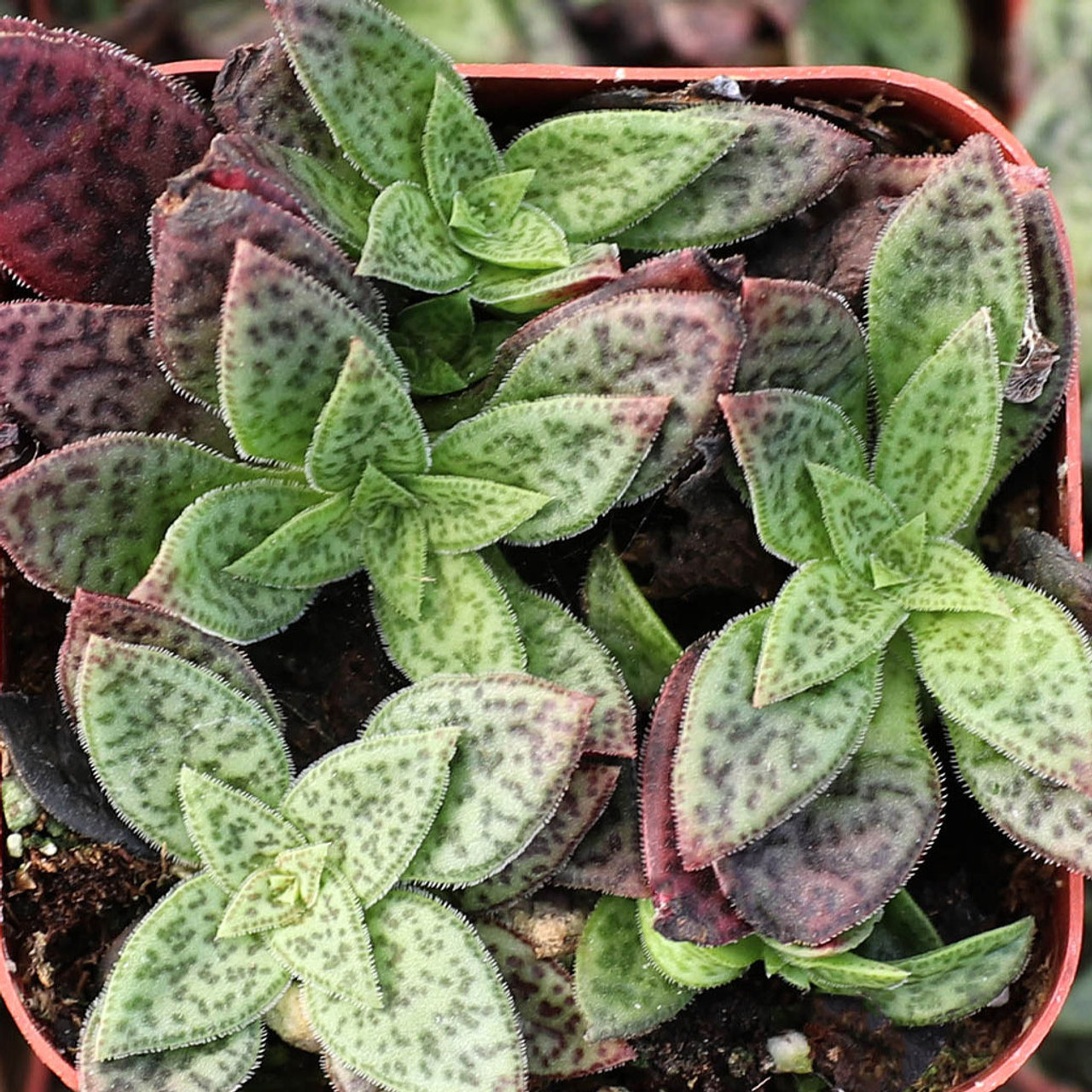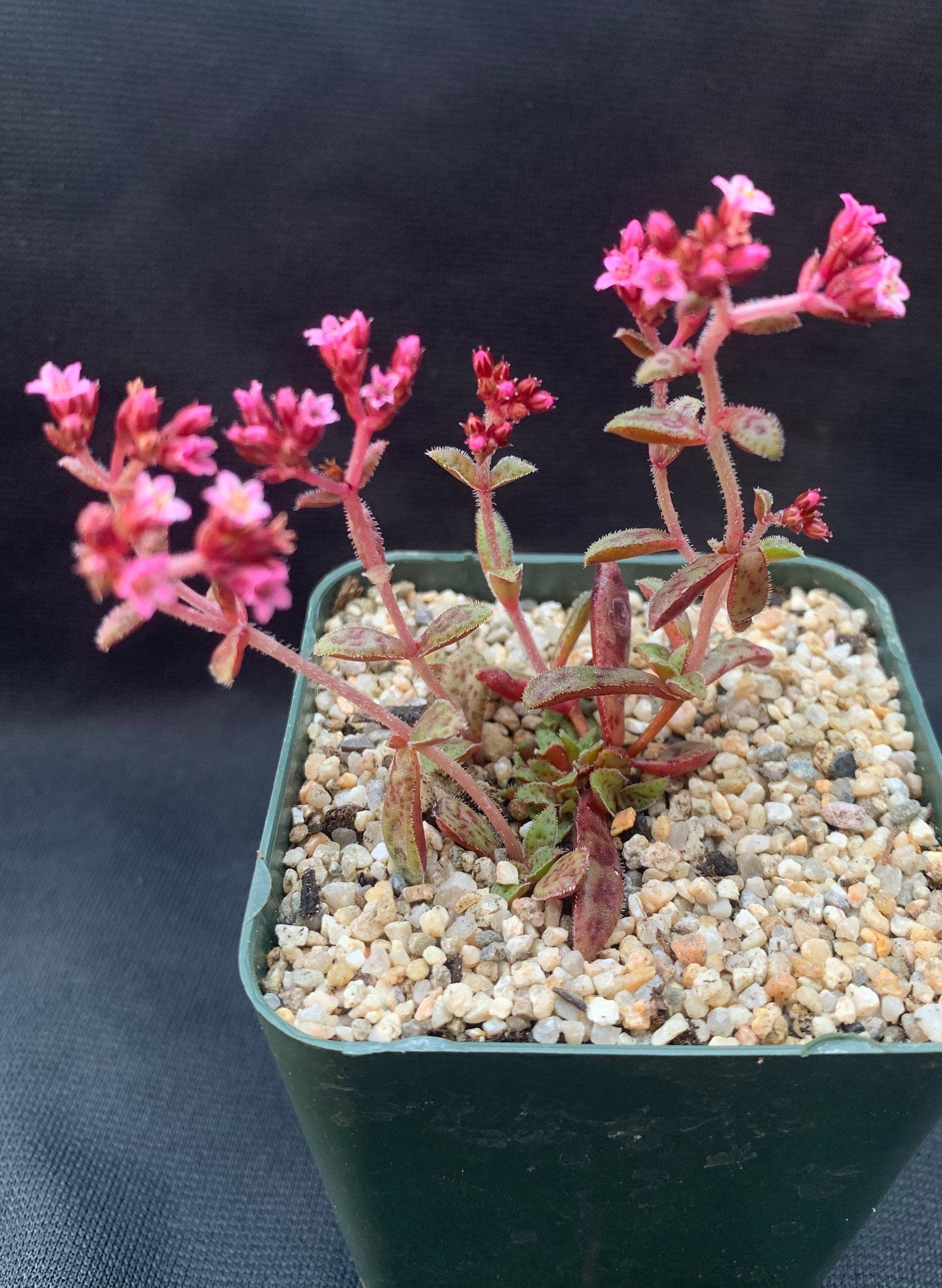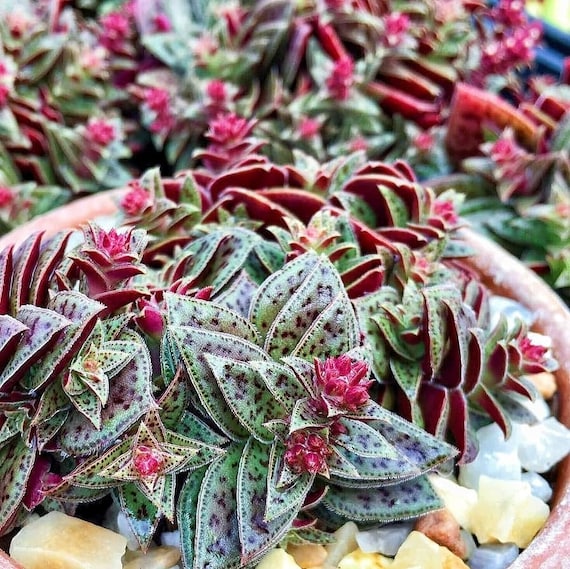This miniature branching succulent has small, triangular-shaped green leaves with dark green spots, earning it the moniker “Tiger Jade”. Its underside may take on a pink to purple hue. It does well both indoors and out, however, its pink colors are more prominent if grown outdoors. Its blooms in the spring can range from white to pink.
Table of Contents
Care and Propagation Information
Crassula exilis ssp. cooperi “Tiger Jade” is a low-growing, spreading succulent that is perfect for rock gardens. It sends out small branches that are decorated with its distinctive leaves. As it grows, it forms a mounding shape.
This plant is low-maintenance, thriving both indoors and outdoors, and can be easily propagated. However, be aware that it is prone to mealybug infestations.
Watering
For optimum care of Crassula exilis ssp. cooperi, it is recommended to use the “soak and dry” method, which entails completely drying out the soil between waterings. This is the typical approach for successful cultivation of this succulent species.
Be sure to download our complimentary guide on watering, so you can figure out when your succulents are receiving too much water and how to prevent it.
Where to Plant
If you live in an area with temperatures dropping below 30° F (-1.1° C), it’s recommended to grow Tiger Jade in a pot that can be moved indoors during cold weather. This succulent does best in full to partial sun.
How to Propagate Crassula exilis ssp. cooperi “Tiger Jade”
Crassula exilis ssp. cooperi “Tiger Jade” can be grown through stem cuttings, leaf cuttings, and seeds.
Cuttings
To propagate ‘Tiger Jade’, obtain a sharp, sterile knife or pair of scissors and take a cutting from the main plant. Allow the cutting to dry and form a callus for a few days before planting it in a soil that drains well. Keep the soil moist but not wet, and water it when it has completely dried out.
Leaves
Then, place the leaf in a shallow dish containing water. Change the water in the dish every day, and in a few weeks, you’ll start to see new growth!
Propagating Tiger Jade is simple! Get a strong, healthy leaf and carefully twist it off of the stem. If a bit of the stem comes off with the leaf, that’s okay. Place the leaf in a shallow container of water and change the water daily. After a few weeks, you will see the new growth!
Allow the leaf to form a protective layer over its cut surface for several days, then place it on a soil mixture that allows water to drain quickly. Water the soil only when it is completely dry. After the growth of roots and a new rosette have occurred and the original leaf has withered away, transplant the new plant to its permanent location.
Seeds
If you want to sow your seeds from scratch, it’s best to do it in a soil that drains well during the fall season. If you live in an area with a warm climate (Zone 9a and above), you can grow the seeds outdoors. If you live in a cooler region, you can start the process indoors, using a grow light.
Care and Propagation Information
General Care for Crassula exilis ssp. cooperi “Tiger Jade”
.
This plant is low-maintenance, thriving both indoors and outdoors, and can be easily propagated. However, be aware that it is prone to mealybug infestations.
Watering
For optimum care of Crassula exilis ssp. cooperi, it is recommended to use the “soak and dry” method, which entails completely drying out the soil between waterings. This is the typical approach for successful cultivation of this succulent species.
Be sure to download our complimentary guide on watering, so you can figure out when your succulents are receiving too much water and how to prevent it.
Where to Plant
If you live in an area with temperatures dropping below 30° F (-1.1° C), it’s recommended to grow Tiger Jade in a pot that can be moved indoors during cold weather. This succulent does best in full to partial sun.
How to Propagate Crassula exilis ssp. cooperi “Tiger Jade”
Crassula exilis ssp. cooperi “Tiger Jade” can be grown through stem cuttings, leaf cuttings, and seeds.
Cuttings
To propagate ‘Tiger Jade’, obtain a sharp, sterile knife or pair of scissors and take a cutting from the main plant. Allow the cutting to dry and form a callus for a few days before planting it in a soil that drains well. Keep the soil moist but not wet, and water it when it has completely dried out.
Leaves
Then, place the leaf in a shallow dish containing water. Change the water in the dish every day, and in a few weeks, you’ll start to see new growth!
Propagating Tiger Jade is simple! Get a strong, healthy leaf and carefully twist it off of the stem. If a bit of the stem comes off with the leaf, that’s okay. Place the leaf in a shallow container of water and change the water daily. After a few weeks, you will see new growth!
Allow the leaf to form a protective layer over its cut surface for several days, then place it on a soil mixture that allows water to drain quickly. Water the soil only when it is completely dry. After the growth of roots and a new rosette have occurred and the original leaf has withered away, transplant the new plant to its permanent location.
Seeds
If you want to sow your seeds from scratch, it’s best to do it in a soil that drains well during the fall season. If you live in an area with a warm climate (Zone 9a and above), you can grow the seeds outdoors. If you live in a cooler region, you can start the process indoors, using a grow light.
FAQ
How do you care for a crassula cactus?
Try to give your crassula plants indirect sunlight throughout the day, or direct sun for no more than six hours. These succulents require special soil that drains quickly and won’t cause root rot. Rocky, sandy soils or potting soil made for succulent plants are ideal for crassula.
How often do you water a Crassula?
Feed with a balanced liquid fertiliser every two to four weeks during the growing season.
How do you care for crassula Cooperi?
Place your plant in a room that is very sunny and bright all day.
– Watering need: Make sure all of the soil is dry before you water it.
– Fertilizing need: Only fertilize if necessary.
– For the most precise care instructions, download the Planta app to get advice based on your plant and its individual needs.
Is Crassula an indoor or outdoor plant?
Crassula plants thrive in warm climates outdoors, in zones 10 through 12, often in the form of shrubs. In colder climates, these plants must be brought inside for the winter, or grown as houseplants.



